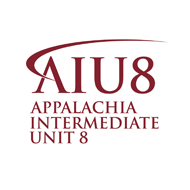Planning & Presenting Effectively
(View Complete Item Description)Speaking in public can be a terrifying experience. But it can also be exciting and beneficial--for the speaker and the audience. This seminar will focus on presenting clear and concise information to an intended audience. To be an effective speaker, you must understand empathy--the ability to feel what others feel, especially your audience. You will also need to be able to speak differently to different audiences, classifying your presentations in various categories. (You probably do that already, but it’s important to understand how you communicate in different ways, depending on who’s listening.)StandardsCC.1.5.9-10.AInitiate and participate effectively in a range of collaborative discussions on grade level topics, texts, and issues, building on others’ ideas and expressing their own clearly and persuasively.CC.1.5.9-10.CIntegrate multiple sources of information presented in diverse media or formats (e.g., visually, quantitatively, orally) evaluating the credibility and accuracy of each source.CC.1.5.9-10.DPresent information, findings, and supporting evidence clearly, concisely, and logically such that listeners can follow the line of reasoning; ensure that the presentation is appropriate to purpose, audience, and task.
Material Type: Lesson Plan




















